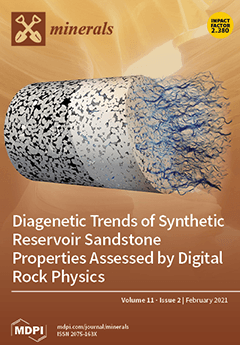This study deals with the potential use of water stored in a lake formed by Reocín’s old zinc mine, which has become the second most important reservoir in Cantabria, with a flow of 1300 L s
−1. The methodology used is based
[...] Read more.
This study deals with the potential use of water stored in a lake formed by Reocín’s old zinc mine, which has become the second most important reservoir in Cantabria, with a flow of 1300 L s
−1. The methodology used is based on the hydrogeological and hydrochemical characterization of the area studied. A total of 16 piezometers were installed to monitor the amount and quality of water. Results obtained show a pH close to 8 and iron, manganese, zinc, and sulphate concentrations lower than 0.05 mg L
−1, 0.05 mg L
−1, 1.063 mg L
−1, and 1305.5 mg L
−1, respectively. The volume of the water stored in the lake amounts to 34 hm
3. Measurements show that Fe, Mn, and Zn concentrations are below the limits acceptable for human consumption, according to the Spanish 0.2, 0.05, and 5.0 mg L
−1 standards, respectively, while sulphate greatly exceeds the 250 mg L
−1 limit accepted by the norm. Therefore, the water could be apt for human consumption after a treatment appropriate for decreasing the sulphate level by, for example, reverse osmosis, distillation, or ion exchange. Although industrial and energy uses are possible, the lake water could be utilized as a geothermal energy source. The management of the hydric resources generated when a mine is closed could improve the economic and environmental conditions of the zone, with all the benefits it brings about, thus allowing for compensating of the pumping cost that environmental protection entails, creating, at the same time, a new business opportunity for the company that owns the mine.
Full article





